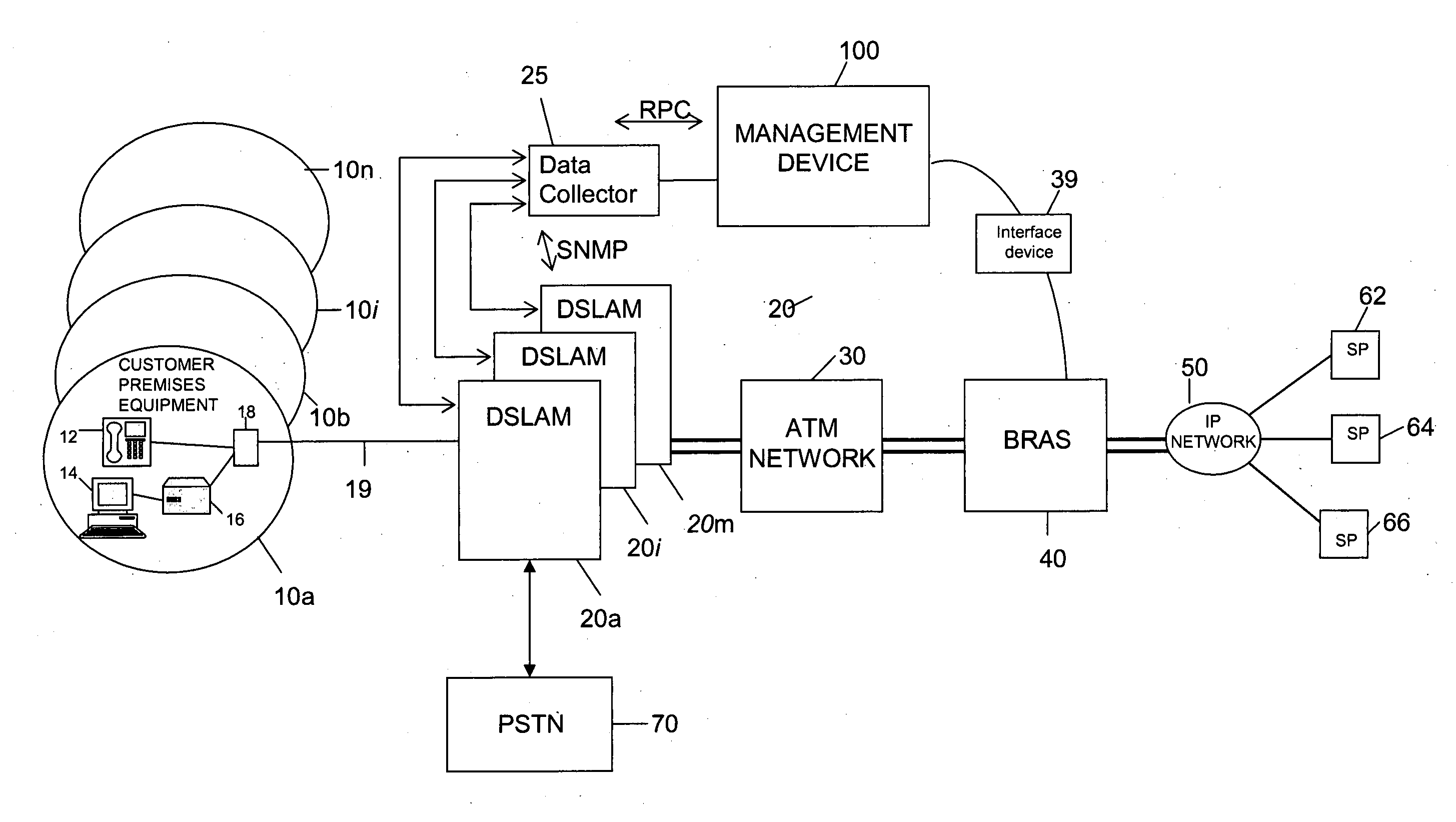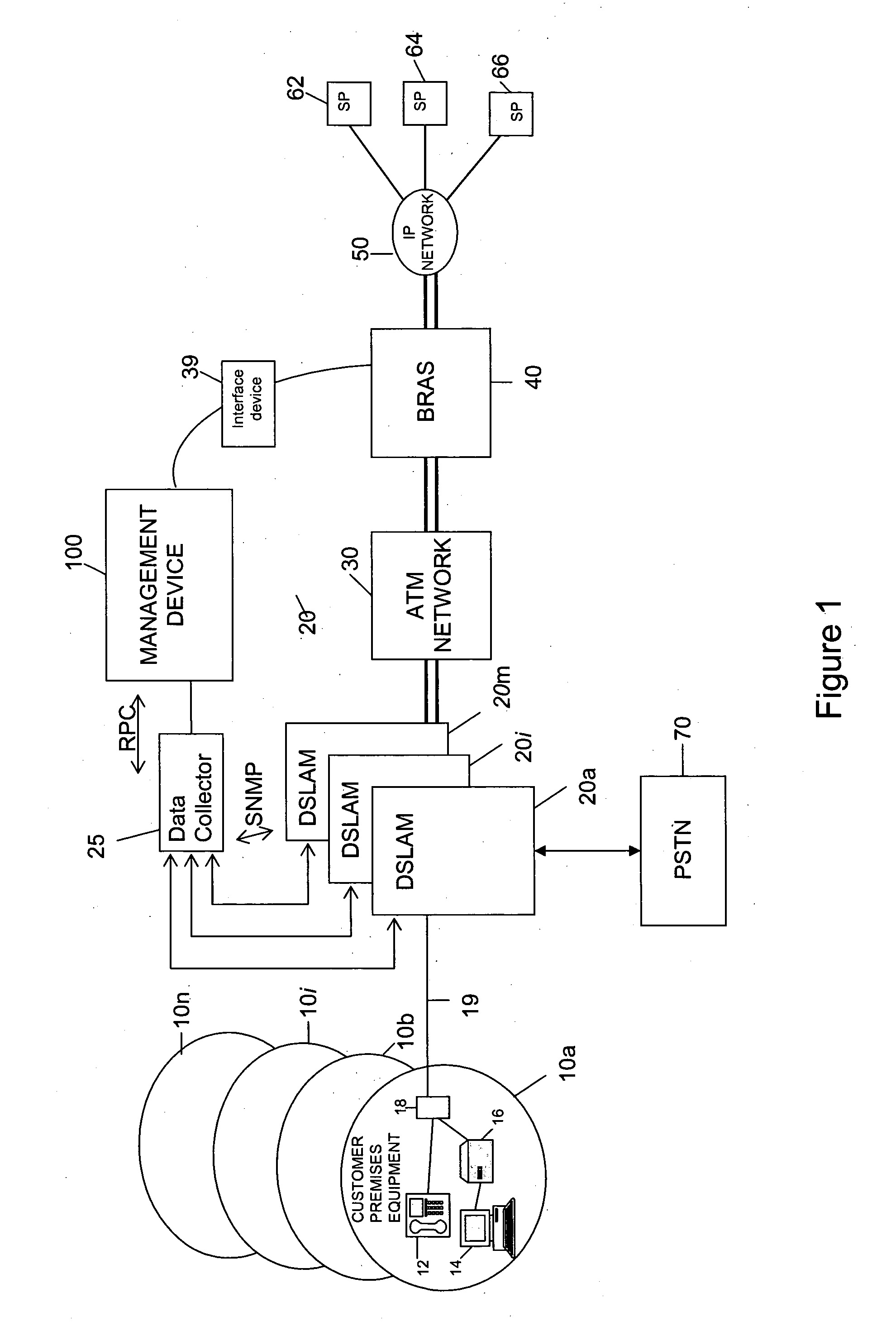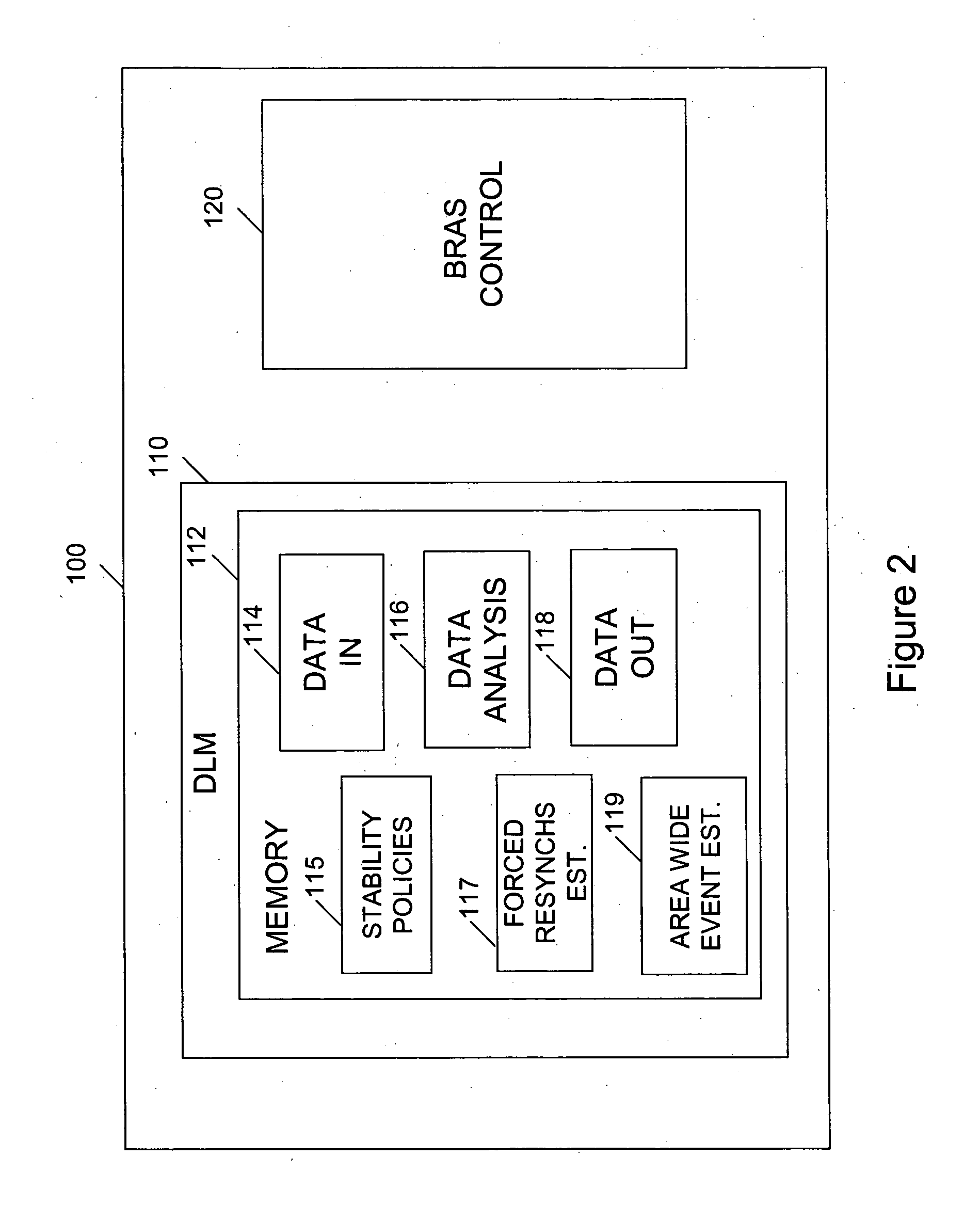Dynamic line management
a line management and dynamic technology, applied in the field of dynamic line management, can solve the problems of not being able to ascertain for sure one way or another, not being able to establish that certain approaches are in fact the case, and being unable to ascertain the exact mathematical operation of ann's, etc., to achieve the effect of reducing the snr margin, increasing the headline bit rate, and improving the latency
- Summary
- Abstract
- Description
- Claims
- Application Information
AI Technical Summary
Benefits of technology
Problems solved by technology
Method used
Image
Examples
Embodiment Construction
[0039]One embodiment described below uses a management device 100 to perform two principal functions—Broadband Remote Access Server (BRAS) provisioning and Dynamic Line Management (DLM). The BRAS provisioning is described in brief in this application, for the sake of completeness, but it is described in greater detail in co-pending International patent applications GB2006 / 002826 and GB2006 / 002818 both filed on 28 Jul. 2006 and incorporated herein by reference in their entireties, referred to above, for readers interested in the particulars of the methods of BRAS provisioning applicable to the main embodiment.
[0040]As for the DLM function, this is a focus of embodiments discussed herein. In general, DLM is desirable in systems such as that of the aforementioned embodiment, where the downstream speed of the ADSL connections controlled by the management device rate adapt to the highest speed the line can support from 2 Mb to 8 Mb. In such cases, because the ADSL connections are running...
PUM
 Login to View More
Login to View More Abstract
Description
Claims
Application Information
 Login to View More
Login to View More - R&D
- Intellectual Property
- Life Sciences
- Materials
- Tech Scout
- Unparalleled Data Quality
- Higher Quality Content
- 60% Fewer Hallucinations
Browse by: Latest US Patents, China's latest patents, Technical Efficacy Thesaurus, Application Domain, Technology Topic, Popular Technical Reports.
© 2025 PatSnap. All rights reserved.Legal|Privacy policy|Modern Slavery Act Transparency Statement|Sitemap|About US| Contact US: help@patsnap.com



